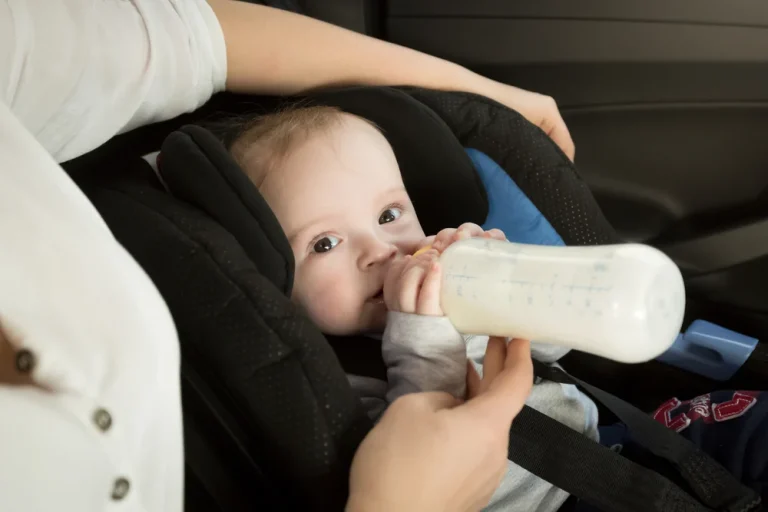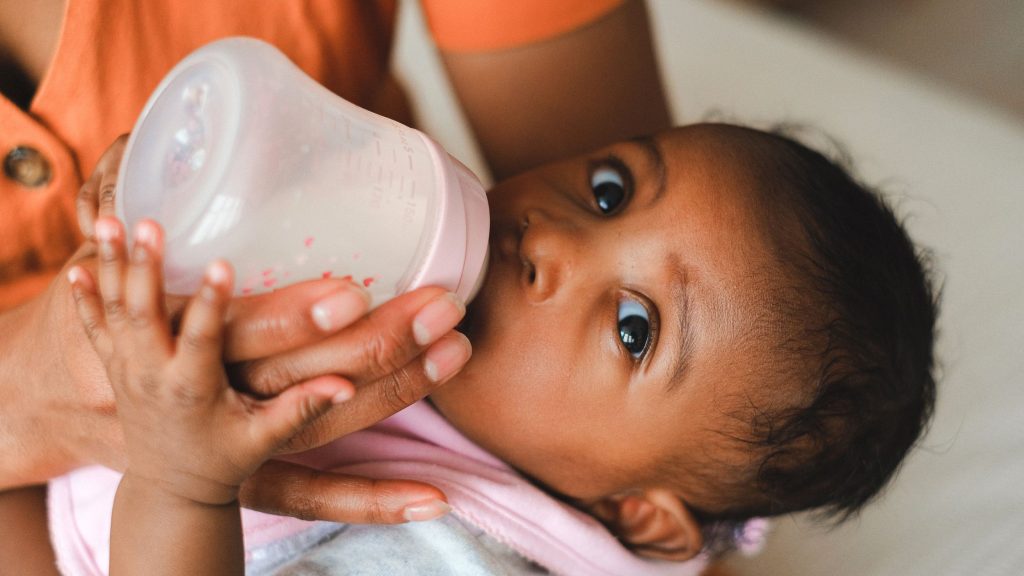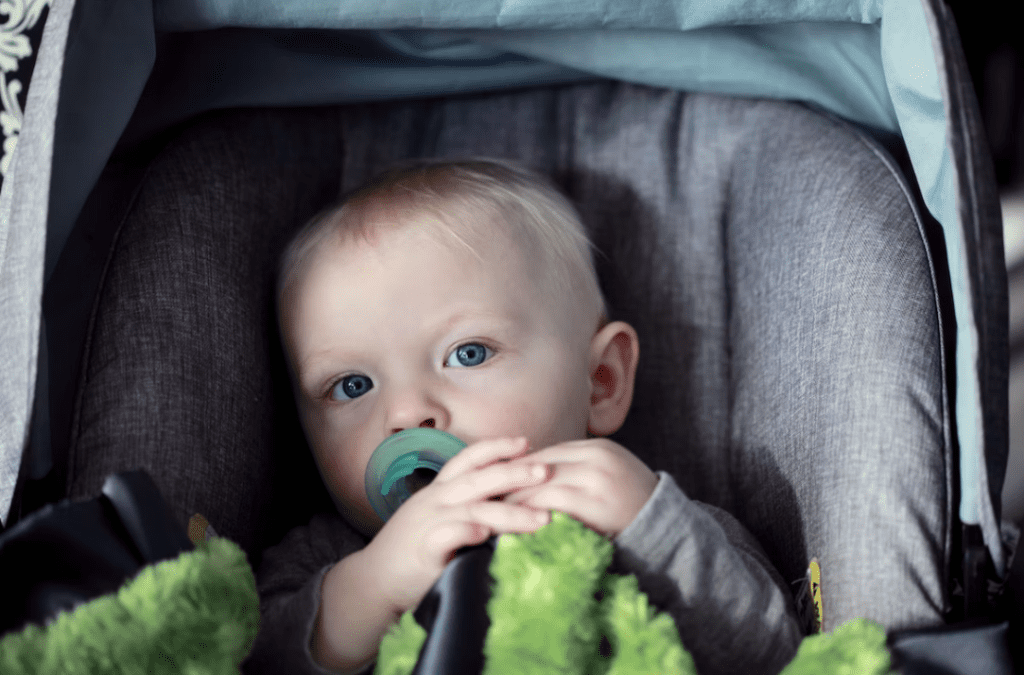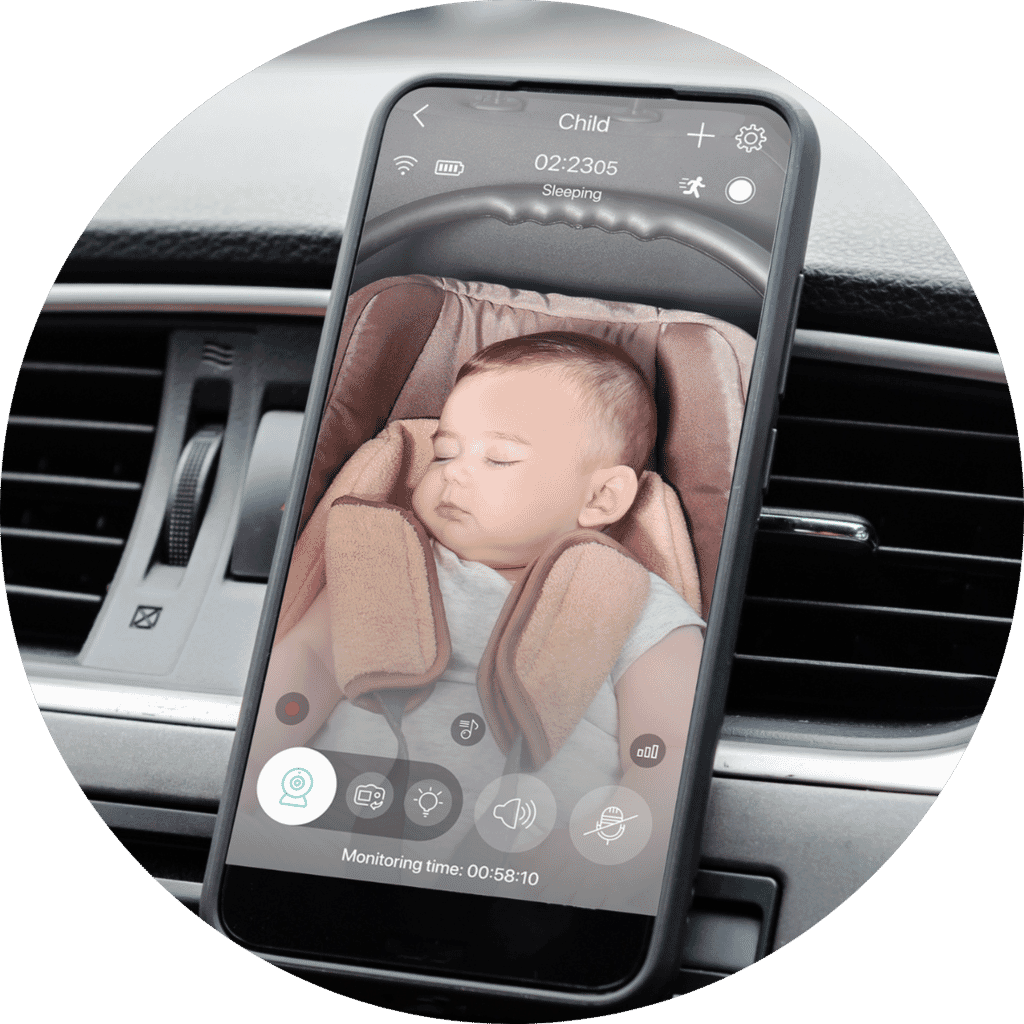
Can You Feed A Baby In A Car Seat? – Everything You Should Know
- Created:
2. 5. 2023 - Updated:
29. 1. 2024
Here is the thing:
A child car seat is the first baby product that most babies use immediately after leaving the hospital.
It’s so crucial that most hospitals won’t discharge you if you don’t have one. This is because car seats reduce the chances of injury, hospitalization, and death by up to 80% in the event of an accident.
While they are a lifesaver, can you feed a baby in a car seat? That’s what this article is about.
Let’s jump right into it.
Can You Feed a Baby In a Car Seat?
No. It’s dangerous to feed a baby when they are in a car seat. This is whether it’s breastfeeding, formula feeding, or snacking. First, a car seat does not provide the best feeding position. Secondly, there are risks of choking, spit-ups, and indigestion problems.
Before we get into why it’s dangerous to feed a baby when they are in a car seat, let’s talk briefly about whether it’s legal to feed a baby in a moving car.

Is It Legal To Breastfeed Or Feed A Baby In A Moving Car?
Yes, it’s not illegal to feed a baby in a moving car. However, it’s dangerous, so you will be putting your baby’s life in danger.
That’s why you will sometimes see social media videos of mothers breastfeeding when they are in a moving car.
Sometimes, a mother is gonna do whatever it takes to take care of their little one. So, you cannot judge these parents. But you cannot fail to notice the risks involved.
Note:
It’s illegal to take the baby out of their car seat when the car is in motion. It’s also illegal for the mother to unbuckle to breastfeed or breastfeeding while driving.
The only legal way to breastfeed is when the baby is securely positioned in the car. This means the mother has to stretch and bend when they are buckled up to be able to breastfeed.
As you can tell, this is strenuous for the mother and also risky for the baby, as we shall see below.
Why You Should Not Feed A Baby When They’re In A Car Seat
Now:
The moment you are traveling with a baby, feeding becomes a huge worry.
The thing is, babies get hungry anytime and anywhere. They often get hungry in the most inconvenient places.
When the baby gets fussy in the car, it can be tempting to bottle feed them while they are in the car seat.
But as I mentioned above, the general consensus among pediatricians is that you shouldn’t feed a baby in a moving car.
Also, you shouldn’t feed the baby when they are in a car seat, even when the car is stationary.
1. Choking Hazard
In the US, unintentional injuries such as choking are the leading cause of death for children between 1-4 years.
Every year, more than 12,000 children are brought to the emergency room because of food-choking injuries.
Worse is that a child dies every five days from choking.
Feeding a baby in a moving car when they are in a car seat has the risk of choking.
In the case of choking, it will take longer to attend to the baby. In such an emergency, it will take longer for the parent to unbuckle their seatbelt and access the baby.
Secondly, it will take time to take the baby out of the car seat to perform first aid on them.
Also, there is very little space in the car to efficiently attend to a choking baby.
If there is no other adult in the car, you will have to find a parking spot before attending to the baby. This can easily turn fatal if it takes several minutes to find a safe parking spot.
There is also the likelihood of silent choking, which can be hard to notice if the baby is facing backward. That’s why direct supervision is recommended when feeding babies.
Looking at all these factors, the likelihood of a choking accident turning fatal in a car is considerably high.
Considering a baby can choke on almost any food, avoid breastfeeding, bottle feeding, or snacking when the baby is in their car seat.
2. It’s A Challenge To Burp A Baby When In A Car Seat
Now:
When babies are breastfeeding or bottle-feeding, they tend to swallow air. That’s why proper feeding position and latching are key when feeding a baby.
Because of this, it’s recommended to burp the baby during and after a feed.
If you don’t burp the baby, the gas can make the baby uncomfortable and can also cause a wet burp, which is usually messy.
The best way to burp a baby is by placing them on your lap facing down or on your shoulder. Then gently pat or rub their back.
However:
This is not possible when you’re in a moving car, considering the baby is supposed to be in the car seat anytime the car is moving.
Even if you try burping the baby, the car seat does not provide the best position for burping a baby.
When the baby is not burped properly, they may experience an unusual spit-up. This will make it uncomfortable for the baby and may create a huge mess.
Also, the AAP recommends holding the baby in an upright position for more than 20 minutes to reduce spitting up.
This is not possible in a moving car since the baby is supposed to be buckled up in their car seat.
3. Car Seat Are Not A Good Feeding Place
Now:
Looking at the design of a car seat, you can easily tell it’s not a suitable feeding chair. Baby car seats are usually inclined up to 45 degrees for the baby’s safety in case of a crash.
The recline angle also prevents the baby from falling forward.
On the other side,
The correct feeding position for a baby is an upright sitting posture for safe swallowing.
4. Feeding Utensils Become Projection Hazards in Case of An Crash
One of the common pieces of advice when driving is to avoid having loose objects in the car.
This is because, in the event of an accident, these loose objects become dangerous projectiles that can cause great harm.
If you are feeding a baby in the car, the feeding utensils, such as bottles, spoons, and cups, pose a great danger in case of an accident.
That’s why it’s recommended to store the items you are carrying in the cargo area or trunk.
If you are storing items in the cargo area, secure them with nets for added safety. Use the glove compartment to store personal items such as cell phones.
Most importantly, all the passengers must wear seat belts since unrestrained passengers become projectiles in the event of a crash.
5. Can Cause Vomiting
Now:
One of the best feeding practices for babies and children is to feed them while they are still and sitting upright.
This is because posture affects digestion.
Feeding a baby when they’re in an inclined position can cause vomiting, bloating, nausea, gas, and abdominal pain.
These symptoms are usually common for babies who are not used to traveling. Also, babies who have only been fed when they are still and in the right posture.
6. Hard To Supervise
Another best practice for feeding babies is close supervision during meals
This is one way to mitigate choking risks, as you will be able to spot when the baby is struggling to swallow.
Close supervision also ensures the baby is maintaining the right posture.
Now:
When you are traveling in a car, close supervision is hard, especially for rear-facing car seats. This is also the case when there is no other adult in the car with you.
Remember, you can’t hold the baby when driving or place the seat in the front passenger seat.

How To Feed A Baby In The Car
Now:
From the above risks, it’s clear why pediatricians discourage feeding a baby in either a moving car or when in a car seat.
But here is the thing:
If you are traveling with a baby, feeding is a must if you want to make the ride easier for you and the baby.
How do you do it?
The safest and recommended way to feed a baby when traveling in a car is to take a break along the way for feeding.
Before leaving home, plan your journey and identify the perfect spot to park and feed the baby. For safety, it should be in a place where you are not alone. This can be a rest area or a public car park.
Before choosing the area to stop, consider your regular feeding interval.
For instance, if your baby feeds every hour, plan to stop after every 45 minutes.
The extra minutes will be used for finding the parking spot and warming any cold food.
Don’t wait until the baby has started getting fuzzy to pull over.
Note:
Make sure to make a stop after every two hours. Infant healthcare professionals say babies shouldn’t be in a car seat for more than 2 hours continuously.
After finding the perfect spot, remove the baby from the car seat and either hold them or place them in a high-feeding chair if you have one.
If the baby is breastfed, find a comfortable spot and position yourself. Luckily, it’s legal to breastfeed your little one in public.
After feeding, make sure to burp the baby. Remember to hold the baby upright for at least 20 minutes to prevent spitting up when you get back in the car.
This break also provides you with ample time for a diaper change. If you are traveling with your partner, these breaks also allow you to feed as a family, if that’s what you do at home.
The mom can also express breast milk during this time. It’s also safe to express breast milk in the car as long as you are not the driver.
Feeding Tips When Traveling In A Car With A Baby
1. Feed The Baby Before Leaving Home
Here is the trick.
Before leaving home, feed the baby. This is whether you are breastfeeding or bottle feeding.
Next, burp the baby and hold them still and upright for up to 20 minutes.
This will reduce the chances of colic or spitting up when you get in the car. If your baby is a bit older and can eat solids, go with foods that are easy on the stomach to avoid indigestion issues and motion sickness.
2. Pack Food and Other Essentials
Before leaving home, ensure you have packed all the supplies you will need to feed your baby.
Here are a few of the things you should bring with you
- A travel high chair, if you have the space.
- Equipment for warming food
- Breast pump (if necessary)
- Breast milk in a well-insulated cooler or formula
- Sterilizing equipment
- Bottles
- Utensils
- Car Adapter
3. Store Perishable Food In The Car Trunk
Now:
If you are carrying perishable foods such as milk, meat, and homemade meals, store them in the trunk.
In most cars, the trunk is a little bit cooler than inside the car.

Can You Give A Pacifier In The Car?
Yes, it is safe to give your little one a pacifier in the car. However, it should not be during the entire ride, only when you want to soothe them or put them to sleep.
A pacifier can also help babies who hate their car seats. However, investigate what could be the cause.
The biggest issue with a pacifier is the constant falling. So find a way to secure it to the seat.
Final Tip: Monitor Your Baby’s Health with Annie Baby Monitor
If you’re a parent wondering about feeding your baby in a car seat, here’s a game-changing tip. Annie Baby Monitor can make feeding on the go a breeze. Place the monitor in your car and keep an eye on your little one while they enjoy their meal.
With this smart, user-friendly device, you can leave your concerns behind and embrace a new level of security. It’s an essential, smart, intuitive, and indispensable helper to your family’s travels.
Get ready to embark on a road where every ride becomes pleasant and worry-free. Enjoy safe driving with Annie Baby Monitor.

Don’t forget to share your experiences with us at the App Store!
Conclusion
It is not recommended to feed a baby while in a moving car or car seat due to safety concerns. The best way is to find a safe parking spot to feed the baby, ensuring their safety and preventing any potential risks or hazards.
Frequently Asked Questions on Whether You Can Feed A Baby In A Car Seat
Nursing a baby in a moving car is dangerous. All states require babies to be put in a child safety seat when traveling in a car.
Considering the mother must also be bucked up, there is no safe way of nursing a baby.
Also, a baby car seat does not provide the best nursing position for a baby and can cause choking.
In such an occurrence, it would take a long time to unbuckle and remove the baby from the car seat to perform first aid.
No, it’s unsafe for babies to feed in a moving car. There is the risk of choking, vomiting, and indigestion symptoms.
The best way to feed a baby when traveling in a car is to find a safe spot to park and feed the baby.
You have already understood that feeding a child in a car seat is a dubious idea, but this does not mean that you should deny yourself travel. Rent a 7 seater vehicle hire with a child seat and go wherever you want.






